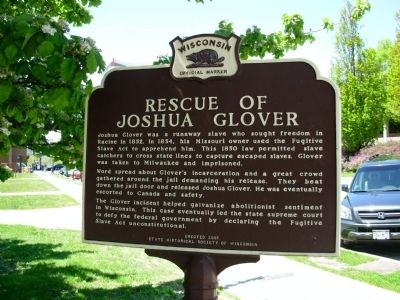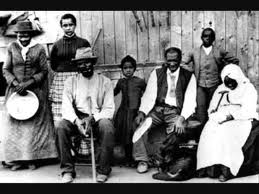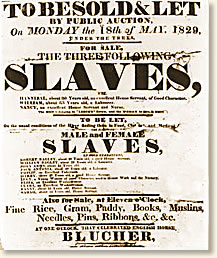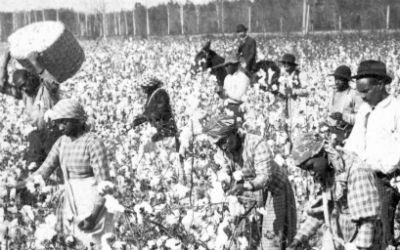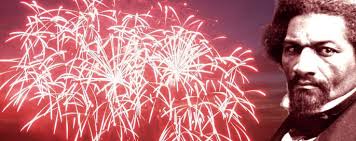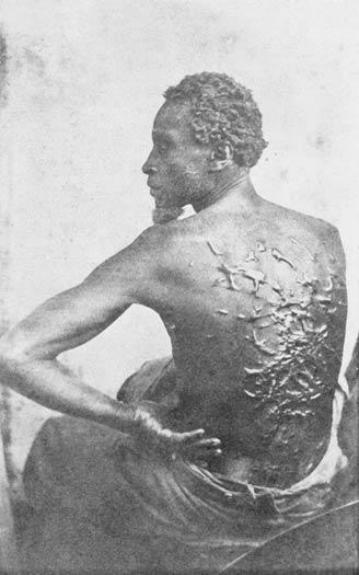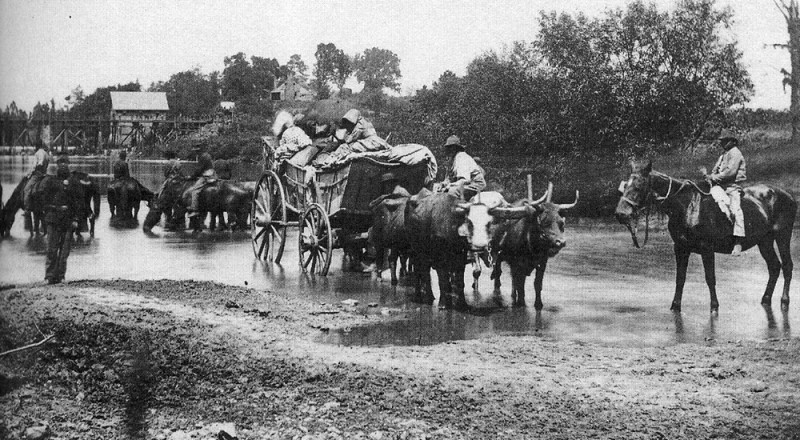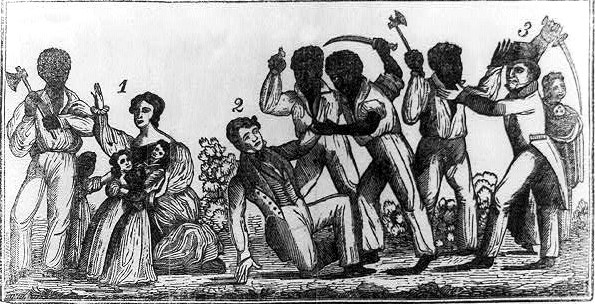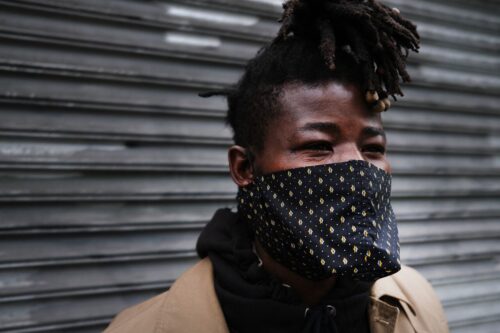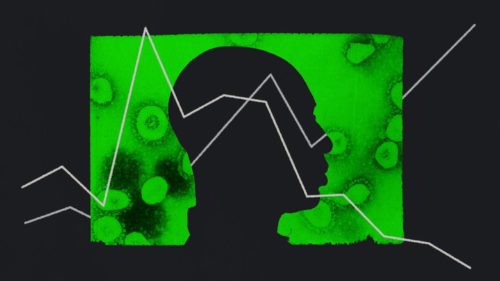COVID-19
Explore Our Online Exhibits
Breaking News
Worldwide Community Events
Week 6
- Sun 23
- Mon 24
- Tue 25
- Wed 26
- Thu 27
- Fri 28
- Sat 1
- Sun 2
- Mon 3
- Tue 4
- Wed 5
- Thu 6
- Fri 7
- Sat 8
- Sun 9
- Mon 10
- Tue 11
- Wed 12
- Thu 13
- Fri 14
- Sat 15
- Sun 16
- Mon 17
- Tue 18
- Wed 19
- Thu 20
- Fri 21
- Sat 22
- Sun 23
- Mon 24
- Tue 25
- Wed 26
- Thu 27
- Fri 28
- Sat 29
- Sun 30
- Mon 31
- Tue 1
- Wed 2
- Thu 3
- Fri 4
- Sat 5
-
23February

Discounted Tours Every Wednesday
ABHM in Milwaukee, WI23February
Black History Month 2025
ABHM in Milwaukee, WI23February
Black History Month @ MPM: Crossing The Line
Milwaukee Public Museum23February
Building Legacies
MATC Create Gallery23February23February 23February
23February 8:00 AM - 12:00 AM
8:00 AM - 12:00 AMSailing to Freedom: Maritime Dimensions of the Underground Railroad
Chesapeake Bay Maritime Museum23February 8:00 AM - 12:00 AM
8:00 AM - 12:00 AMEbb/Flow: Pritika Chowdhry, Chotsani Elaine Dean and Courtney M. Leonard
Weisman Art Museum23February 23February
23February 10:00 AM - 12:00 AM
10:00 AM - 12:00 AMMagnolia Shoebox Lunch N Learn & Traveling While Black Immersive Experience
Magnolia House23February 23February
23February
-
24February

Discounted Tours Every Wednesday
ABHM in Milwaukee, WI24February
Black History Month 2025
ABHM in Milwaukee, WI24February
Black History Month @ MPM: Crossing The Line
Milwaukee Public Museum24February
Building Legacies
MATC Create Gallery24February24February 24February
24February All Day
All DaySailing to Freedom: Maritime Dimensions of the Underground Railroad
Chesapeake Bay Maritime Museum24February 24February
24February 24February
24February 24February
24February
-
25February

Discounted Tours Every Wednesday
ABHM in Milwaukee, WI25February
Black History Month 2025
ABHM in Milwaukee, WI25February
Black History Month @ MPM: Crossing The Line
Milwaukee Public Museum25February
Building Legacies
MATC Create Gallery25February25February 25February
25February All Day
All DaySailing to Freedom: Maritime Dimensions of the Underground Railroad
Chesapeake Bay Maritime Museum25February 25February
25February 25February
25February 25February
25February 3:30 PM - 4:15 PM
3:30 PM - 4:15 PMRaphael Rogers: Representing Black Girl Magic with Contemporary Picture Books
Dana Commons, Higgins Lounge25February
-
26February

Discounted Tours Every Wednesday
ABHM in Milwaukee, WI26February
Black History Month 2025
ABHM in Milwaukee, WI26February
Black History Month @ MPM: Crossing The Line
Milwaukee Public Museum26February
Building Legacies
MATC Create Gallery26February26February 26February
26February All Day
All DaySailing to Freedom: Maritime Dimensions of the Underground Railroad
Chesapeake Bay Maritime Museum26February 26February
26February 26February
26February 26February
26February
-
27February

Discounted Tours Every Wednesday
ABHM in Milwaukee, WI27February
Black History Month 2025
ABHM in Milwaukee, WI27February
Black History Month @ MPM: Crossing The Line
Milwaukee Public Museum27February
Building Legacies
MATC Create Gallery27February27February 27February
27February All Day
All DaySailing to Freedom: Maritime Dimensions of the Underground Railroad
Chesapeake Bay Maritime Museum27February 27February
27February 27February
27February 27February
27February 27February
27February
-
28February

Discounted Tours Every Wednesday
ABHM in Milwaukee, WI28February
Black History Month 2025
ABHM in Milwaukee, WI28February
Black History Month @ MPM: Crossing The Line
Milwaukee Public Museum28February
Building Legacies
MATC Create Gallery28February28February 28February
28February All Day
All DaySailing to Freedom: Maritime Dimensions of the Underground Railroad
Chesapeake Bay Maritime Museum28February 28February
28February 28February
28February 28February
28February 28February
28February
-
01March

Discounted Tours Every Wednesday
ABHM in Milwaukee, WI01March
Black History Month @ MPM: Early Learning Series
Milwaukee Public Museum01March
Black History Month @ MPM: Crossing The Line
Milwaukee Public Museum01March01March 01March
01March All Day
All DaySailing to Freedom: Maritime Dimensions of the Underground Railroad
Chesapeake Bay Maritime Museum01March 01March
01March 12:00 AM - 2:00 PM
12:00 AM - 2:00 PMMagnolia Shoebox Lunch N Learn & Traveling While Black Immersive Experience
Magnolia House01March 01March
01March
-
02March

Discounted Tours Every Wednesday
ABHM in Milwaukee, WI02March
Black History Month @ MPM: Crossing The Line
Milwaukee Public Museum02March02March 02March
02March All Day
All DaySailing to Freedom: Maritime Dimensions of the Underground Railroad
Chesapeake Bay Maritime Museum02March 02March
02March
-
03March

Discounted Tours Every Wednesday
ABHM in Milwaukee, WI03March
Black History Month @ MPM: Crossing The Line
Milwaukee Public Museum03March03March 03March
03March All Day
All DaySailing to Freedom: Maritime Dimensions of the Underground Railroad
Chesapeake Bay Maritime Museum03March 03March
03March
-
04March

Discounted Tours Every Wednesday
ABHM in Milwaukee, WI04March
Black History Month @ MPM: Crossing The Line
Milwaukee Public Museum04March04March 04March
04March All Day
All DaySailing to Freedom: Maritime Dimensions of the Underground Railroad
Chesapeake Bay Maritime Museum04March 04March
04March
-
05March

Discounted Tours Every Wednesday
ABHM in Milwaukee, WI05March
National Society of Black Engineers Convention
McCormick Place05March
Black History Month @ MPM: Crossing The Line
Milwaukee Public Museum05March05March 05March
05March All Day
All DaySailing to Freedom: Maritime Dimensions of the Underground Railroad
Chesapeake Bay Maritime Museum05March 05March
05March 05March
05March
-
06March

Discounted Tours Every Wednesday
ABHM in Milwaukee, WI06March
National Society of Black Engineers Convention
McCormick Place06March
Black History Month @ MPM: Crossing The Line
Milwaukee Public Museum06March06March 06March
06March All Day
All DaySailing to Freedom: Maritime Dimensions of the Underground Railroad
Chesapeake Bay Maritime Museum06March 06March
06March
-
07March

Discounted Tours Every Wednesday
ABHM in Milwaukee, WI07March
National Society of Black Engineers Convention
McCormick Place07March07March 07March
07March All Day
All DaySailing to Freedom: Maritime Dimensions of the Underground Railroad
Chesapeake Bay Maritime Museum07March 07March
07March
-
08March

Discounted Tours Every Wednesday
ABHM in Milwaukee, WI08March
National Society of Black Engineers Convention
McCormick Place08March08March 08March
08March All Day
All DaySailing to Freedom: Maritime Dimensions of the Underground Railroad
Chesapeake Bay Maritime Museum08March 08March
08March
-
09March

Discounted Tours Every Wednesday
ABHM in Milwaukee, WI09March
National Society of Black Engineers Convention
McCormick Place09March09March 09March
09March All Day
All DaySailing to Freedom: Maritime Dimensions of the Underground Railroad
Chesapeake Bay Maritime Museum09March 09March
09March
-
10March

Discounted Tours Every Wednesday
ABHM in Milwaukee, WI10March10March 10March
10March All Day
All DaySailing to Freedom: Maritime Dimensions of the Underground Railroad
Chesapeake Bay Maritime Museum10March
-
11March

Discounted Tours Every Wednesday
ABHM in Milwaukee, WI11March11March 11March
11March All Day
All DaySailing to Freedom: Maritime Dimensions of the Underground Railroad
Chesapeake Bay Maritime Museum11March
-
12March

Discounted Tours Every Wednesday
ABHM in Milwaukee, WI12March12March 12March
12March All Day
All DaySailing to Freedom: Maritime Dimensions of the Underground Railroad
Chesapeake Bay Maritime Museum12March
-
13March

Discounted Tours Every Wednesday
ABHM in Milwaukee, WI13March13March 13March
13March All Day
All DaySailing to Freedom: Maritime Dimensions of the Underground Railroad
Chesapeake Bay Maritime Museum13March 13March
13March
-
14March

Discounted Tours Every Wednesday
ABHM in Milwaukee, WI14March14March 14March
14March All Day
All DaySailing to Freedom: Maritime Dimensions of the Underground Railroad
Chesapeake Bay Maritime Museum14March
-
15March

Discounted Tours Every Wednesday
ABHM in Milwaukee, WI15March15March 15March
15March All Day
All DaySailing to Freedom: Maritime Dimensions of the Underground Railroad
Chesapeake Bay Maritime Museum15March
-
16March

Discounted Tours Every Wednesday
ABHM in Milwaukee, WI16March16March 16March
16March All Day
All DaySailing to Freedom: Maritime Dimensions of the Underground Railroad
Chesapeake Bay Maritime Museum16March
-
17March

Discounted Tours Every Wednesday
ABHM in Milwaukee, WI17March17March 17March
17March All Day
All DaySailing to Freedom: Maritime Dimensions of the Underground Railroad
Chesapeake Bay Maritime Museum17March
-
18March

Discounted Tours Every Wednesday
ABHM in Milwaukee, WI18March18March 18March
18March All Day
All DaySailing to Freedom: Maritime Dimensions of the Underground Railroad
Chesapeake Bay Maritime Museum18March
-
19March

Discounted Tours Every Wednesday
ABHM in Milwaukee, WI19March19March 19March
19March All Day
All DaySailing to Freedom: Maritime Dimensions of the Underground Railroad
Chesapeake Bay Maritime Museum19March
-
20March

Discounted Tours Every Wednesday
ABHM in Milwaukee, WI20March20March 20March
20March All Day
All DaySailing to Freedom: Maritime Dimensions of the Underground Railroad
Chesapeake Bay Maritime Museum20March 20March
20March 20March
20March
-
21March

Discounted Tours Every Wednesday
ABHM in Milwaukee, WI21March21March 21March
21March All Day
All DaySailing to Freedom: Maritime Dimensions of the Underground Railroad
Chesapeake Bay Maritime Museum21March
-
22March

Discounted Tours Every Wednesday
ABHM in Milwaukee, WI22March22March 22March
22March All Day
All DaySailing to Freedom: Maritime Dimensions of the Underground Railroad
Chesapeake Bay Maritime Museum22March
-
23March

Discounted Tours Every Wednesday
ABHM in Milwaukee, WI23March23March 23March
23March All Day
All DaySailing to Freedom: Maritime Dimensions of the Underground Railroad
Chesapeake Bay Maritime Museum23March 23March
23March
-
24March

Discounted Tours Every Wednesday
ABHM in Milwaukee, WI24March24March 24March
24March All Day
All DaySailing to Freedom: Maritime Dimensions of the Underground Railroad
Chesapeake Bay Maritime Museum24March
-
25March

Discounted Tours Every Wednesday
ABHM in Milwaukee, WI25March25March 25March
25March All Day
All DaySailing to Freedom: Maritime Dimensions of the Underground Railroad
Chesapeake Bay Maritime Museum25March
-
26March

Discounted Tours Every Wednesday
ABHM in Milwaukee, WI26March26March 26March
26March All Day
All DaySailing to Freedom: Maritime Dimensions of the Underground Railroad
Chesapeake Bay Maritime Museum26March
-
27March

Discounted Tours Every Wednesday
ABHM in Milwaukee, WI27March27March 27March
27March All Day
All DaySailing to Freedom: Maritime Dimensions of the Underground Railroad
Chesapeake Bay Maritime Museum27March 27March
27March -
28March

Discounted Tours Every Wednesday
ABHM in Milwaukee, WI28March28March 28March
28March All Day
All DaySailing to Freedom: Maritime Dimensions of the Underground Railroad
Chesapeake Bay Maritime Museum28March
-
29March

Discounted Tours Every Wednesday
ABHM in Milwaukee, WI29March29March 29March
29March All Day
All DaySailing to Freedom: Maritime Dimensions of the Underground Railroad
Chesapeake Bay Maritime Museum29March 29March
29March 1:00 PM - 6:00 PM
1:00 PM - 6:00 PMPhenomenal Woman Marketplace at America’s Black Holocaust Museum
ABHM in Milwaukee, WI -
30March

Discounted Tours Every Wednesday
ABHM in Milwaukee, WI30March30March 30March
30March All Day
All DaySailing to Freedom: Maritime Dimensions of the Underground Railroad
Chesapeake Bay Maritime Museum30March
-
31March

Discounted Tours Every Wednesday
ABHM in Milwaukee, WI31March31March 31March
31March All Day
All DaySailing to Freedom: Maritime Dimensions of the Underground Railroad
Chesapeake Bay Maritime Museum31March
-
01April

Discounted Tours Every Wednesday
ABHM in Milwaukee, WI01April01April 01April
01April All Day
All DaySailing to Freedom: Maritime Dimensions of the Underground Railroad
Chesapeake Bay Maritime Museum01April
-
02April

Discounted Tours Every Wednesday
ABHM in Milwaukee, WI02April02April 02April
02April All Day
All DaySailing to Freedom: Maritime Dimensions of the Underground Railroad
Chesapeake Bay Maritime Museum02April
-
03April

Discounted Tours Every Wednesday
ABHM in Milwaukee, WI03April03April 03April
03April All Day
All DaySailing to Freedom: Maritime Dimensions of the Underground Railroad
Chesapeake Bay Maritime Museum03April 03April
03April 6:00 PM - 7:00 PM
6:00 PM - 7:00 PMTracing Early African American Legacies in Minnesota
Winona County Historical Society -
04April

Discounted Tours Every Wednesday
ABHM in Milwaukee, WI04April04April 04April
04April All Day
All DaySailing to Freedom: Maritime Dimensions of the Underground Railroad
Chesapeake Bay Maritime Museum04April
-
05April

Discounted Tours Every Wednesday
ABHM in Milwaukee, WI05April05April 05April
05April All Day
All DaySailing to Freedom: Maritime Dimensions of the Underground Railroad
Chesapeake Bay Maritime Museum05April 05April
05April 05April
05April
Share
A coronavirus known as SARS-CoV-2 caused the COVID-19 pandemic, which originated in China before spreading worldwide in 2020. This global pandemic was not equally destructive, however. The virus itself was more harmful to elderly people and those with pre-existing health conditions. However, economic and racial inequalities prevented some people from accessing necessary screening, treatment, or vaccines or following medical advice such as social distancing or quarantining. Medical racism also played a role during COVID-19, and some Black patients formed support groups after the medical system ignored them. The pandemic also highlighted how some medical equipment worked poorly for Black patients.
Nearly 7 million people died of COVID globally, with millions more surviving the disease that raged for multiple years. In the United States, Black people remained at risk while others decreased their concern, which was entirely warranted. African Americans experienced a higher death rate due to COVID-19 than other races, and many struggle with the effects of long COVID. Lingering illness and disability have removed some people from the workforce, while others struggle financially under the weight of caring for or losing others in their households. Funding intended for Black Americans to help mitigate these harms resulted in lawsuits. Similarly, money intended for COVID-19 support was rerouted to prisons, which had already contributed to the rapid-fire spread of COVID-19.
The pandemic prompted a shift to virtual learning, working, and communication. While some welcomed this shift, it further highlighted economic disparities for others. This also resulted in learning setbacks for students. Meanwhile, COVID-19 resurfaced distrust between the Black community and the medical establishment that stems, in part, from the Tuskegee experiment.
COVID-19 was also the backdrop of the Black Lives Matter movement, which grew after video of the May 2020 murder of George Floyd by a Minneapolis police officer surfaced online.
Black men are feeling conflicted about wearing masks in the time of COVID-19. Wear a mask and risk being mistaken for a thief and possibly killed. Not wearing a mask and risk contracting and dying from the virus.
Read MoreDespite a US Supreme Court decision not to postpone elections, Wisconsin voters braved the cold and coronavirus to elect a democratic supreme court justice.
Read MoreAmerica continues to blame Black Americans for whatever ills may befall them. The coronavirus is another example of blaming the victim instead of systemic racism, that permeates all aspects of society.
Read More